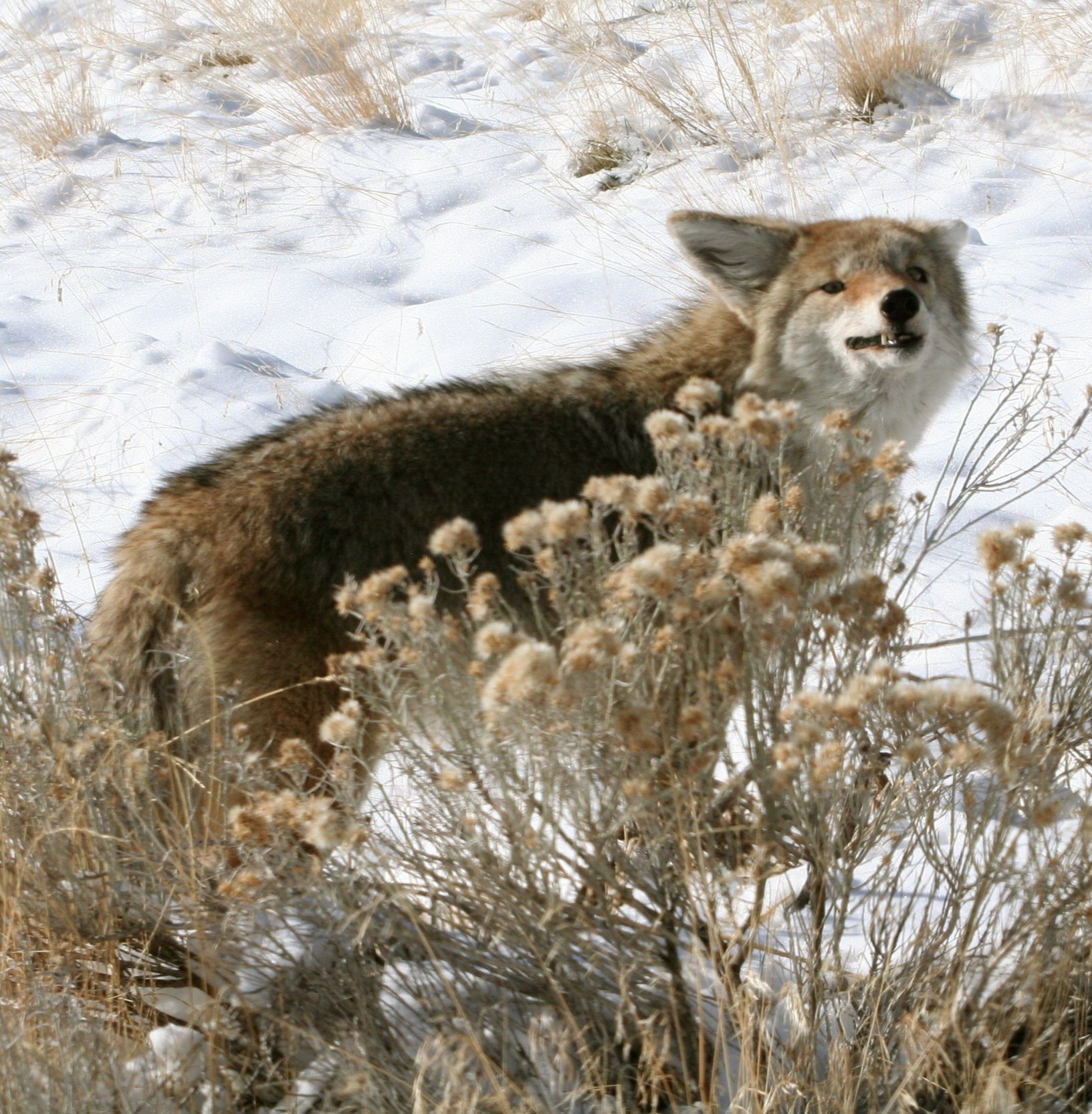When should I take the shot?
There are many variables in coyote hunting and each of them plays a part in deciding when to take the shot at an incoming coyote. In this post I will share my insight and opinions.
The short answer is “Whenever the coyote offers a good shot opportunity.” No matter what you do, there will always be situations when you will say “Shoula’, coulda’ woulda’.” What follows is an analysis of what to do in different circumstances.
What weapon system are you using?
If the gun in your hand is a shotgun and they are coming in well, let them come. With a shotgun, closer is better. Keep in mind the wind direction and the fact that there will be residual human scent on your call. If you are concerned about the coyote winding you, take the shot before they do. I have killed coyotes with a shotgun at ranges from 50 yards to 50 feet.
The coyote in the photo on the left is sniffing the air, looking for scent that will help it pinpoint the location of the wounded rabbit it’s hearing.
In my experience, an unalarmed coyote is easier to kill with a shotgun than one that has been spooked. If possible, take the shot before you get busted.
With a scoped rifle, it makes more sense to take the shot somewhere between 30 and 100 yards. At these ranges its easier to find the kill zone in a scope and any good coyote caliber will still be accurate and deadly. With a red dot sight, its easier to find your target at close range and letting the dog keep coming might be a better choice.
Read the coyotes body language
If you spend time calling coyotes you will see all types of responses. Some will come in on a dead run, jumping over and weaving through cover. With this type of response, you may only have seconds before the coyote gets too close and spooks. If possible, switch to your shotgun and let him come.
When using a rifle in this situation, the challenge is trying to get the coyote to stop for a standing shot. Once the coyote is within reasonable range, try barking (like a dog), howling or growling. These abrupt noises will often bring a hard charging coyote to a stop. Before stopping the coyote, be sure you are in position and ready to take the shot as soon as the coyote stops. It will likely be looking right at the source of the sound, which is you. It may not stay still for long.
If a coyote is approaching slow but steady, let it come into good shooting range. Only move when the coyote is moving or behind cover. Their eyesight is excellent at picking up movement.
Watch their movement pattern. They will often stop briefly, using eyes, ears and nose to try locating the source of the sound. These pauses can be for an instant, or for a few seconds. If you are ready for the shot when they stop, you can seal the deal.
A coyote that is hesitating beyond 100 yards or so and making a wide circle without getting closer will likely not come closer. You might try changing up your sounds, but this is probably an educated dog that will not offer a better opportunity. Wait for it to stop and squeeze off a good shot.
Using a Decoy
A moving decoy can often encourage a more aggressive response. Coyotes will try to verify the exact location of the sound thay are hearing. They will primarily use their sense of hearing, but will try to verify what they are hearing with their sense of smell or sight. You never want a coyote to get to your downwind side, so a decoy may satisfy their need for confirmation and make them more likely to quickly respond.
